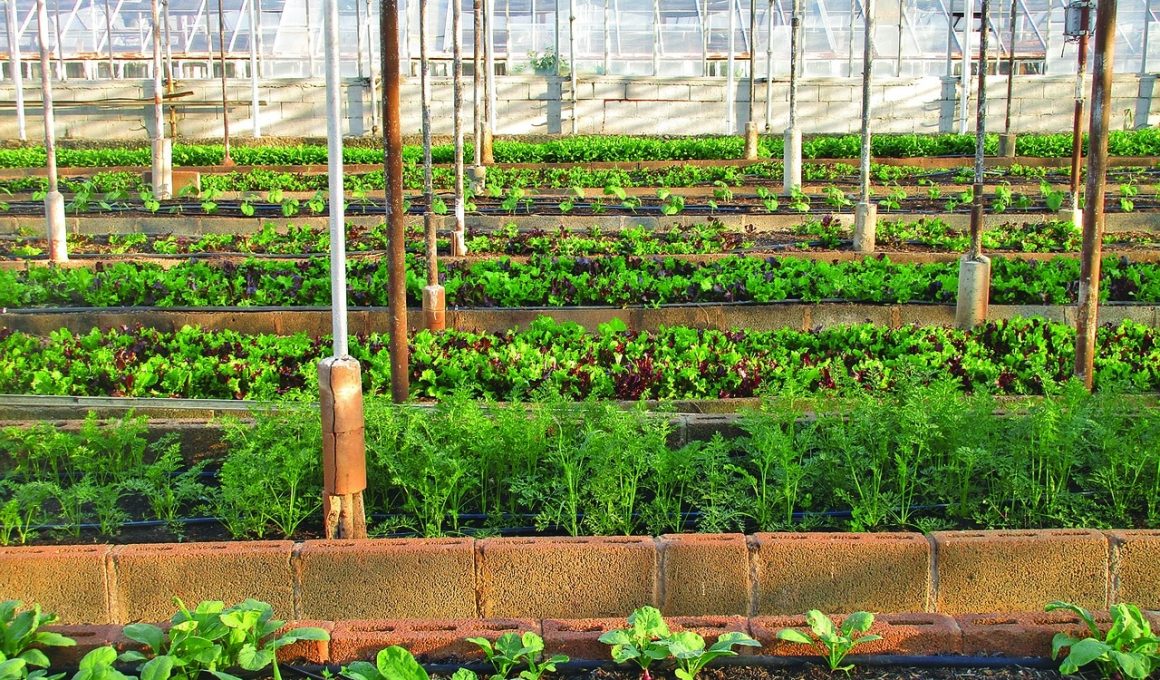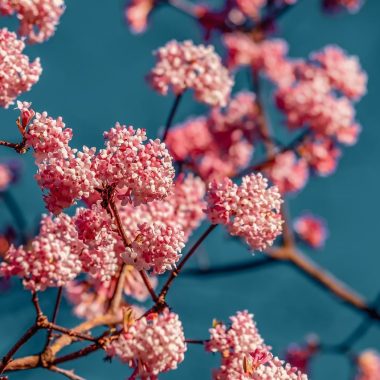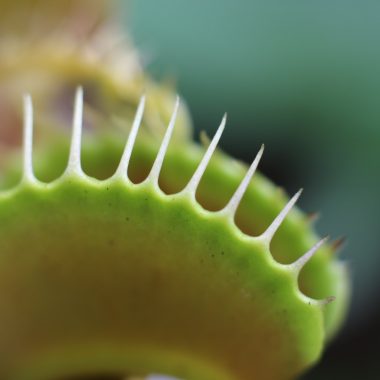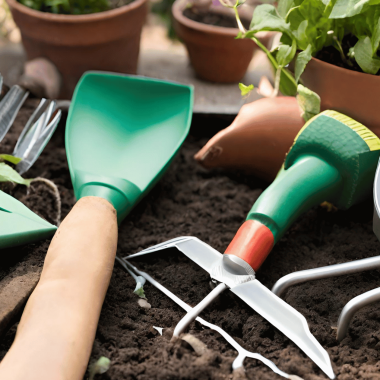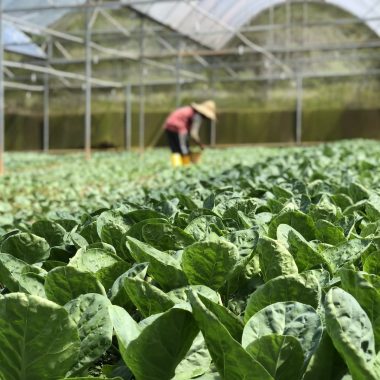Controlling the temperature in your indoor greenhouse is crucial when it comes to maintaining an optimal environment for your plants.
Plants are sensitive to temperature fluctuations, and excessive heat buildup can have detrimental effects on their growth and overall health.
Maintaining Optimal Temperature for Plant Health
To ensure the well-being of your plants, it’s important to provide them with a stable and suitable temperature.
Different plants have different temperature requirements, so it’s essential to understand the specific needs of the plants in your greenhouse.
For example, tropical plants thrive in warmer temperatures, while cool-season plants prefer cooler conditions.
By understanding the temperature preferences of your plants, you can create a comfortable environment that promotes healthy growth.
If you’re unsure about the temperature needs of your plants, consult reliable resources or seek advice from local gardening experts.
Challenges of Heat Build-Up in Greenhouses
One of the biggest challenges in greenhouse gardening is heat build-up.
Greenhouses are designed to capture and retain heat, which is beneficial during colder months.
However, during hot summer days or in regions with high temperatures, excess heat can accumulate rapidly and become detrimental to your plants.
Excessive heat can lead to heat stress in plants, causing wilting, yellowing leaves, and even plant death.
It can also create an ideal environment for pests and diseases to thrive.
To maintain a healthy growing environment, it’s crucial to implement effective cooling strategies to mitigate the impact of heat build-up.
By understanding the importance of cooling your indoor greenhouse and the challenges posed by heat build-up, you can take proactive steps to create a suitable environment for your plants.
In the next sections, we will explore effective cooling strategies and techniques to help you keep your greenhouse at an optimal temperature for plant growth.
For more information on greenhouse basics, check out our article on what is a greenhouse.
Assessing Your Greenhouse Cooling Needs
To effectively cool your indoor greenhouse, assessing your specific cooling needs is important.
This involves understanding the temperature requirements of your plants and evaluating your current cooling system.
Understanding the Temperature Requirements of Your Plants
Different plants have varying temperature preferences and requirements for optimal growth. Before implementing any cooling strategies, it’s essential to research and understand the temperature range that your specific plants thrive in.
Some plants may prefer cooler temperatures, while others may tolerate or even thrive in warmer conditions.
Refer to the plant care guidelines or consult horticultural resources to determine the ideal temperature range for your plants.
This information will serve as a guide when adjusting the climate within your greenhouse.
Evaluating the Current Cooling System
Assessing the effectiveness of your current cooling system is crucial in identifying areas for improvement.
Take a close look at the cooling methods you currently have in place and evaluate their performance.
Consider the following aspects when evaluating your current cooling system:
- Ventilation: Assess the ventilation system in your greenhouse. Are there enough vents to allow for proper airflow? Are they strategically placed to facilitate the removal of hot air? Evaluate the airflow patterns and identify any areas that may require additional ventilation.
- Shade: Examine the shading system in your greenhouse, such as shade cloth or netting. Is it providing adequate shade to reduce direct sunlight and heat buildup? Consider the density and placement of the shading material to optimize its effectiveness.
- Cooling equipment: If you have cooling equipment, such as fans or evaporative coolers, assess their performance. Are they effectively reducing the temperature and providing sufficient air circulation? Consider the placement of the fans to ensure proper airflow throughout the greenhouse.
- Maintenance: Evaluate the overall condition of your cooling system. Are the fans clean and functioning properly? Are any cooling pads or filters in need of replacement? Regular maintenance is essential to keep your cooling system in optimal condition.
By assessing your greenhouse’s cooling needs and evaluating your current system, you can identify areas that require improvement or modification.
This knowledge will guide you in implementing effective cooling strategies and maintaining an optimal environment for your plants to thrive.
For more information on how to cool a greenhouse, refer to our article on how to cool a greenhouse.
Effective Cooling Strategies for Indoor Greenhouses
When it comes to keeping your indoor greenhouse cool, you can implement several effective strategies.
Let’s explore some of these cooling methods: natural ventilation, shade cloth or netting, evaporative cooling, and air conditioning.
Natural Ventilation
Utilizing natural ventilation is a cost-effective and eco-friendly way to cool your indoor greenhouse.
This method involves strategically placing vents or windows to allow fresh air circulation.
By opening windows or using exhaust fans, you can create a natural airflow that helps lower the temperature inside the greenhouse.
Consider the position and size of the vents to ensure optimal air movement.
It’s advisable to place vents at both the lower and higher points of the greenhouse to facilitate proper air circulation.
Additionally, installing window or roof vents with adjustable openings allows you to control the amount of airflow depending on the temperature and weather conditions.
Shade Cloth or Netting
Shade cloth or netting is another effective cooling solution for your indoor greenhouse.
These materials provide shade and reduce the amount of direct sunlight that reaches the plants, lowering the greenhouse’s overall temperature.
Choosing the right shade cloth or netting depends on your specific needs. Different shade percentages are available, ranging from 30% to 90% shade.
The higher the percentage, the greater the reduction in sunlight transmission.
Assess the light requirements of your plants and select a shade cloth that allows for the optimal balance of light and shade.
Evaporative Cooling
Evaporative cooling is a popular method for cooling greenhouses, especially in dry climates.
This technique harnesses the natural evaporation process to cool the greenhouse air.
Introducing water vapor into the environment reduces the air temperature as the water evaporates.
One way to implement evaporative cooling is by using misting systems or foggers.
These systems release a fine mist or fog of water droplets into the greenhouse, creating a cooling effect as the water evaporates.
Be mindful of the humidity levels and ensure proper ventilation to prevent excessive moisture buildup, which can lead to plant diseases.
Air Conditioning
In some cases, air conditioning may be necessary to maintain the ideal temperature for your plants.
While it is a more expensive cooling option, air conditioning provides precise temperature control and is particularly beneficial for temperature-sensitive plants or in regions with extreme heat.
When using air conditioning in your indoor greenhouse, it’s important to properly insulate the structure to prevent air leakage and maximize energy efficiency.
Additionally, consider installing a thermostat or temperature controller to regulate the cooling system based on the desired temperature range.
Remember, each cooling strategy comes with its own advantages and considerations.
Assess the specific needs of your plants, the climate in which you are located, and your budget to determine which cooling methods will work best for your indoor greenhouse.
By implementing these cooling strategies, you can create a comfortable environment that promotes the health and growth of your plants.
Maximizing Air Circulation and Ventilation
Maximizing air circulation and ventilation is key to effectively cooling an indoor greenhouse.
Proper airflow helps maintain a consistent temperature, prevents heat pockets, and allows plants to thrive.
Here are some strategies to consider:
Proper Placement of Fans
Strategically placing fans throughout your greenhouse can greatly improve air circulation.
Position fans at different heights to ensure airflow reaches all areas.
Place them near the entrance and exit to create a cross breeze. Directing the fans toward the plants can help distribute cool air and prevent stagnant zones.
| Fan Placement | Benefits |
|---|---|
| Near entrance and exit | Creates cross breeze |
| Directed towards plants | Distributes cool air |
Ventilation Systems and Techniques
In addition to fans, utilizing ventilation systems and techniques can further enhance air circulation.
Here are some options to consider:
- Exhaust Fans: Install exhaust fans near the top of your greenhouse to expel hot air. These fans work in conjunction with intake vents, drawing fresh air into the greenhouse and pushing out warm air.
- Roof Vents: Roof vents are an effective way to release hot air that rises to the top of the greenhouse. These vents can be manually or automatically controlled, allowing for temperature regulation even when you’re not present.
- Side Vents: Side vents are positioned along the sides of the greenhouse and can be opened to allow fresh air to enter. These vents are particularly useful during the cooler parts of the day when the outside temperature is lower.
- Hinged Doors: If your greenhouse has doors, consider adding hinges to allow for partial opening. This allows for controlled ventilation, especially during periods of high heat.
By employing a combination of fans and ventilation systems, you can optimize air circulation in your greenhouse, reducing the risk of heat build-up and ensuring a healthier environment for your plants.
Remember to regularly monitor the temperature inside your greenhouse, especially during hot periods of the day.
This will allow you to adjust and optimize your cooling strategies accordingly.
For more information on how to cool a greenhouse and other greenhouse-related topics, check out our articles on how to cool a greenhouse and how to use a portable greenhouse.
With proper air circulation and ventilation, your indoor greenhouse can stay cool and provide an optimal environment for your plants to thrive.
Additional Tips for Cooling an Indoor Greenhouse
To ensure optimal conditions for your indoor greenhouse, you can follow several additional tips to cool the environment effectively.
These include watering and humidity control, insulation and shade, and monitoring and adjusting temperature.
Watering and Humidity Control
Proper watering and humidity control are essential for maintaining a cool and comfortable environment for your plants.
Here are some tips to help you achieve this:
- Watering: Water your plants during the cooler parts of the day, such as early morning or late evening, to minimize evaporation and provide ample hydration. Avoid overwatering, as excess moisture can lead to increased humidity levels.
- Humidity Control: Use a hygrometer to monitor the humidity levels in your greenhouse. If the humidity is too high, consider using a dehumidifier to remove excess moisture from the air. Additionally, you can improve air circulation by using fans or opening vents to help reduce humidity levels.
Insulation and Shade
Insulation and shade prevent heat buildup and maintain a cool greenhouse environment.
Consider the following tips:
- Insulation: Insulate your greenhouse using materials such as shade cloth, bubble wrap, or reflective films. These materials help to reduce heat transfer and keep the interior temperature cooler.
- Shade: Use shade cloth or netting to provide shade for your plants during peak sunlight hours. This will help to reduce direct sunlight exposure and prevent overheating. Make sure to choose a shade cloth with an appropriate shade percentage based on the needs of your plants.
Monitoring and Adjusting Temperature
Regular monitoring and adjustment of temperature are essential for maintaining a cool indoor greenhouse.
Here’s what you can do:
- Thermometer: Install a thermometer in your greenhouse to monitor the temperature levels accurately. This will help you identify any temperature fluctuations and take necessary actions.
- Ventilation: Proper ventilation is crucial for temperature regulation. Ensure that your greenhouse has sufficient vents and fans to allow for air circulation. Consider using automatic vents or exhaust fans that can open and close based on temperature settings.
- Shade and Cooling Systems: If the temperature rises above the desired range, use shading techniques such as applying shade cloth or using misting systems to cool down the greenhouse. These methods can help to lower the temperature and create a more comfortable environment for your plants.
By implementing these additional tips, you can effectively cool your indoor greenhouse and create the ideal conditions for your plants to thrive.
Remember to regularly assess the temperature and humidity levels, making adjustments as needed to ensure the well-being of your greenery.
For more information on greenhouse-related topics, check out our articles on how to heat a greenhouse and how to cool a greenhouse.
